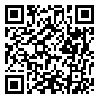Volume 2, Issue 2 (Autumn – Winter 2009[PERSIAN] 2008)
mljgoums 2008, 2(2): 0-0 |
Back to browse issues page
Download citation:
BibTeX | RIS | EndNote | Medlars | ProCite | Reference Manager | RefWorks
Send citation to:



BibTeX | RIS | EndNote | Medlars | ProCite | Reference Manager | RefWorks
Send citation to:
Tavakoli H, Manafi M, Bayat M, Mehrabi Tavana A. Rapid detection of the most important pathogenic microorganisms in water and Food by (Chromogenic media). mljgoums 2008; 2 (2)
URL: http://mlj.goums.ac.ir/article-1-38-en.html
URL: http://mlj.goums.ac.ir/article-1-38-en.html
1- , alimehrabitavana@yahoo.com
Abstract: (23391 Views)
Abstract Background and Objectives: Chromogenic media are the newest methods applied for rapid detection of pathogenic microorganisms in drinking water and food from 1998-2008. These Specific media contained the compounds acting as a substrate for microbial enzymes and, according to the type of enzyme, produce specific color. The aim of this study was to introduce the chromogenic media as a powerful tool in rapid detection of pathogenic agents in drinking water and food. Material and Methods: In this review article, the published papers about the use of chromogenic media in rapid detection of water and food-born pathogens were investigated. Results: The studies conducted in different countries show that the chromogenic media are very sensitive, specific and with high performance therefore, we can use it to detect the most important pathogenic microorganisms (such as Salmonella spp, E.coli, S.aureus, L.monocytogenes, and Candida spp.) in water and food samples. Conclusion: Because chromogenic media, in comparison with the other rapid detection methods such as PCR and ELISA, are very sensitive and cheaper, it can be applied as an alternative method. Key words: Chromogenic media, Rapid detection, water and food, Microorganism
Received: 2011/08/16 | Accepted: 2014/01/12 | Published: 2014/01/12 | ePublished: 2014/01/12
Send email to the article author
| Rights and permissions | |
 |
This work is licensed under a Creative Commons Attribution-NonCommercial 4.0 International License. |

This work is licensed under a Creative Commons Attribution-NonCommercial 4.0 International License.






